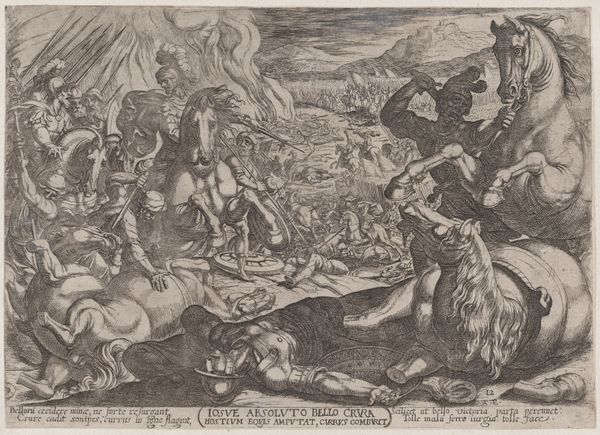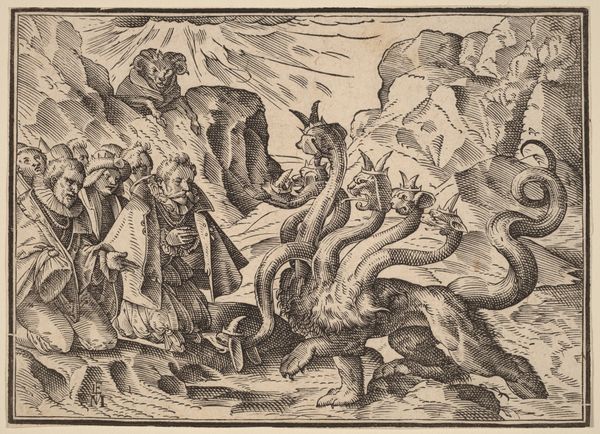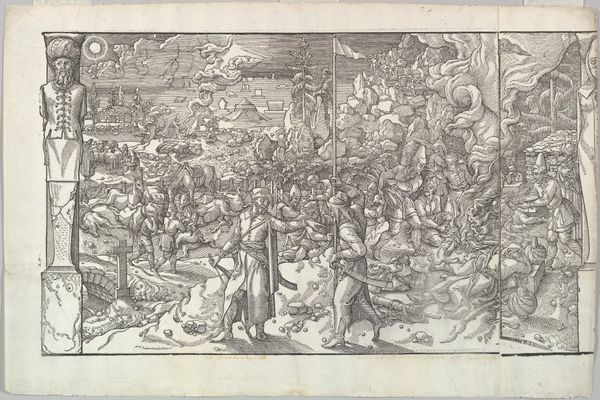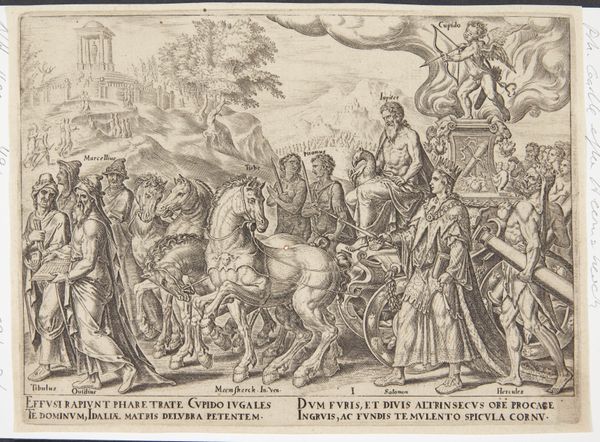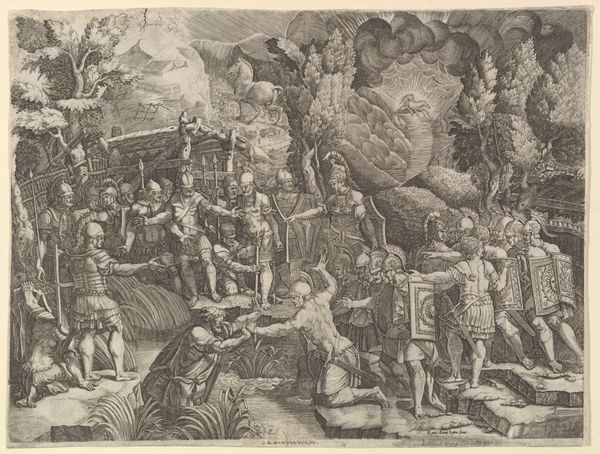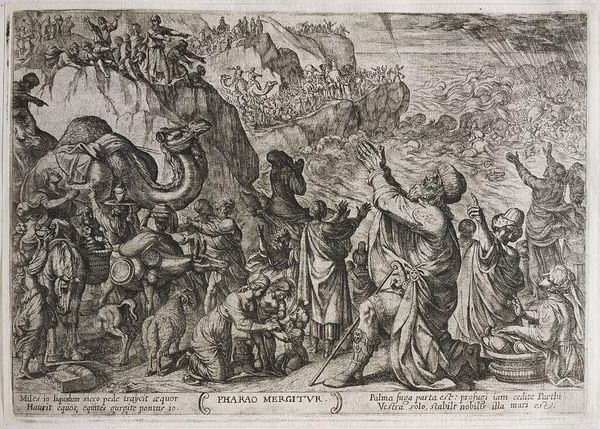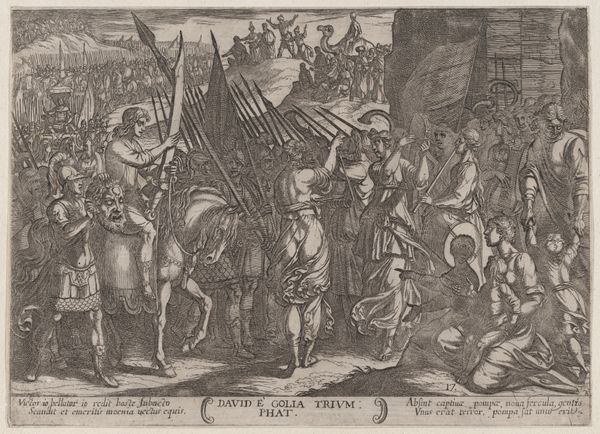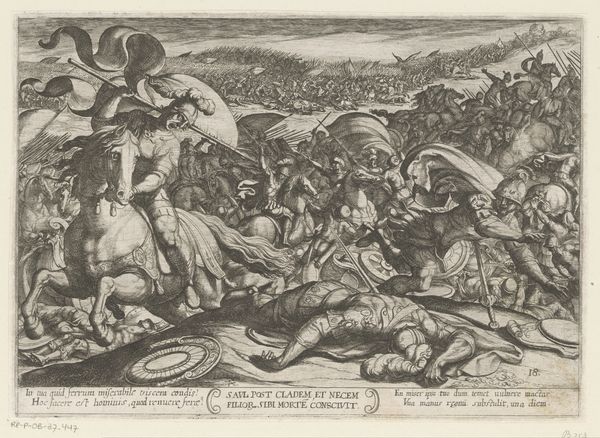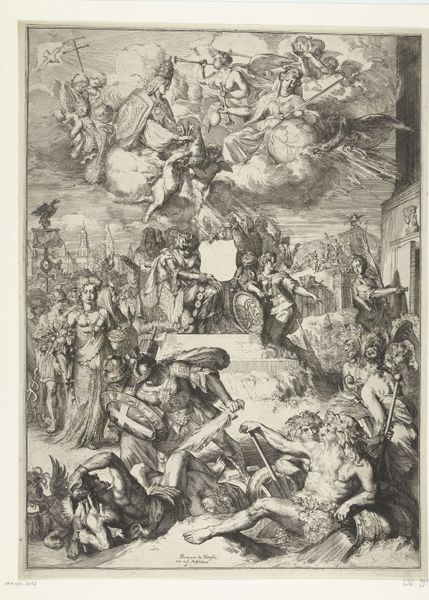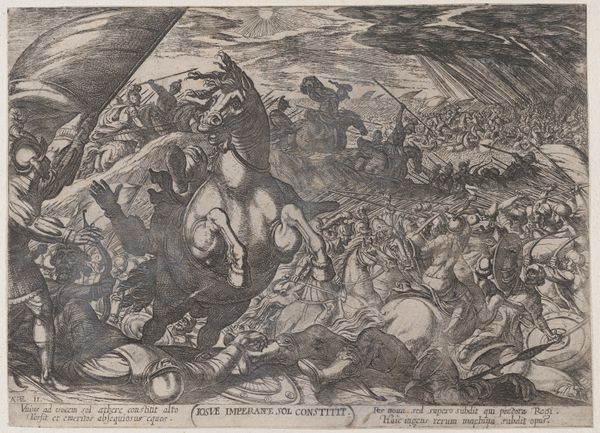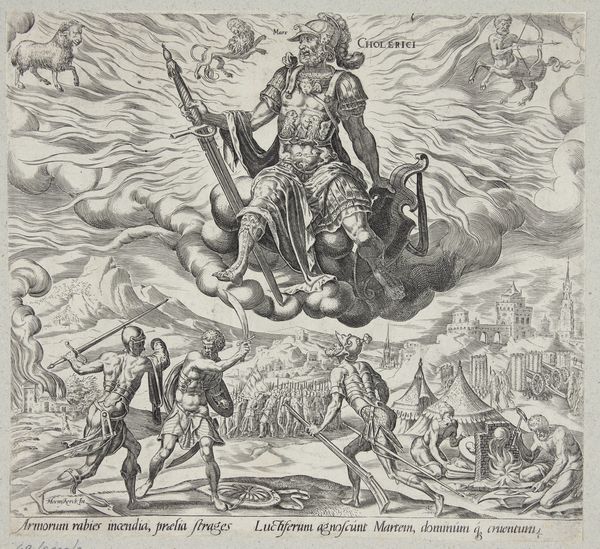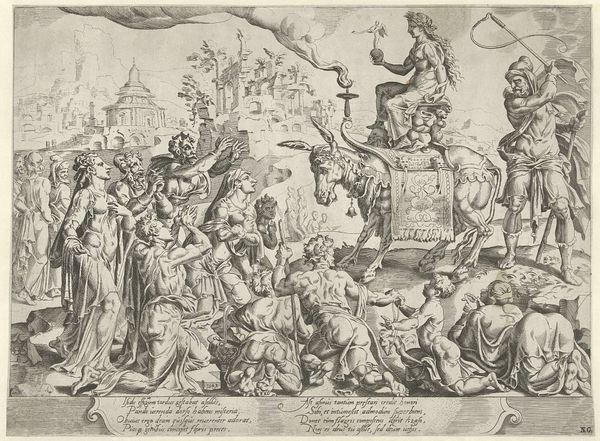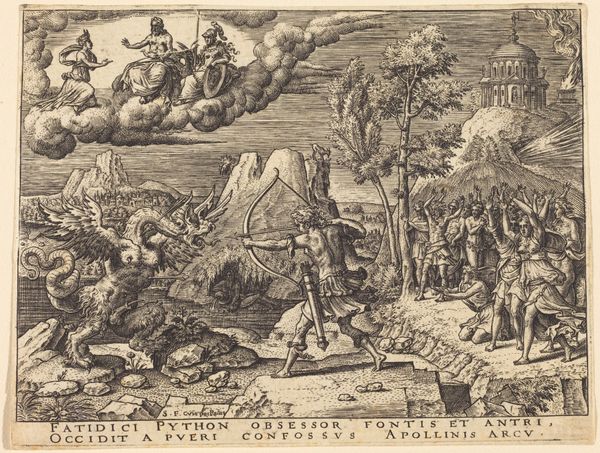
Plate 8: The Egyptians Drowning in the Red Sea, from 'The Battles of the Old Testament' 1585 - 1615
0:00
0:00
drawing, print, engraving
#
drawing
# print
#
landscape
#
mannerism
#
horse
#
men
#
history-painting
#
engraving
Dimensions: Sheet: 7 7/8 × 11 1/8 in. (20 × 28.3 cm)
Copyright: Public Domain
Editor: This is "Plate 8: The Egyptians Drowning in the Red Sea," an engraving by Antonio Tempesta dating from around 1585 to 1615. It’s teeming with figures and a palpable sense of chaos, and is part of a series titled "The Battles of the Old Testament". How do you interpret this work? Curator: This image, precisely because of that "chaos," speaks volumes about cultural memory and the role of symbolic imagery. The drowning Egyptians, the triumphant Israelites – it's not just a historical depiction. It's about the enduring power of faith, and the terrifying consequences of its rejection. Notice how Tempesta uses the roiling sea itself – its visual language evokes both destruction and purification. Editor: So, you're saying it's less about literal history and more about symbolic representation? Curator: Exactly! The artist's Mannerist style emphasizes the drama. Consider the gestures: despair, supplication, triumph. These aren't just people drowning; they are archetypes embodying profound moral narratives that are embedded within Western consciousness. Editor: I see what you mean. The animals seem to be calmly watching. I had initially missed this perspective! Curator: It invites reflection: does their observation invite detachment from or reinforce the importance of humanity? What purpose do you think the inclusion of animals serves to a deeper visual literacy? Editor: It does make me think more about different roles, reactions and expectations in that moment! I initially just thought of the human experience of being at the Red Sea. Curator: Think of how these images were circulated as prints. They acted as visual sermons, reinforcing faith and instilling moral lessons about choice and its cultural meanings. Editor: This makes me look at the image quite differently. Thank you! Curator: My pleasure. Consider how later artists interpret these same iconic scenes and how those adaptations carry their own symbolism and implications.
Comments
No comments
Be the first to comment and join the conversation on the ultimate creative platform.
